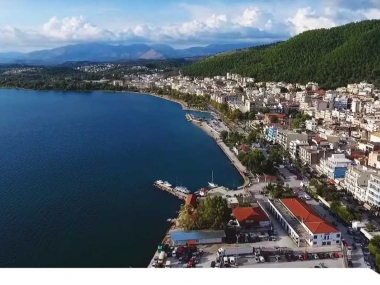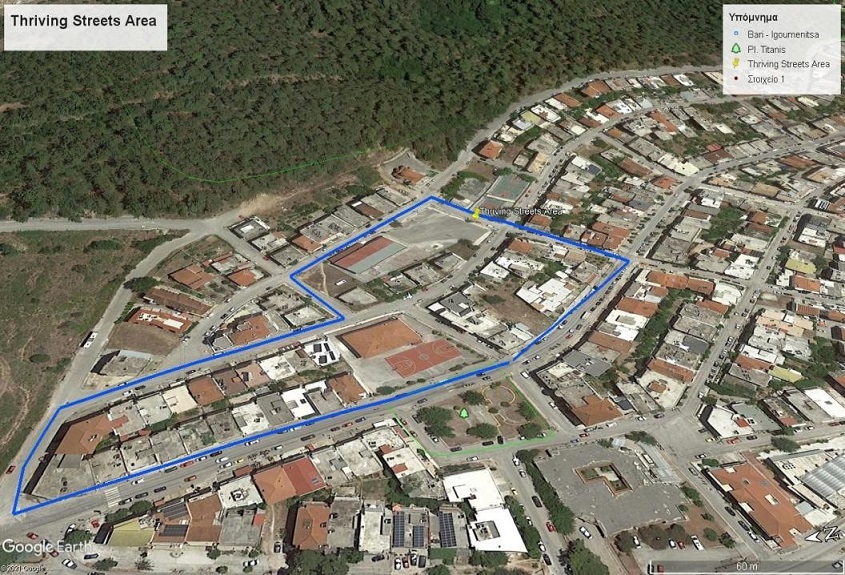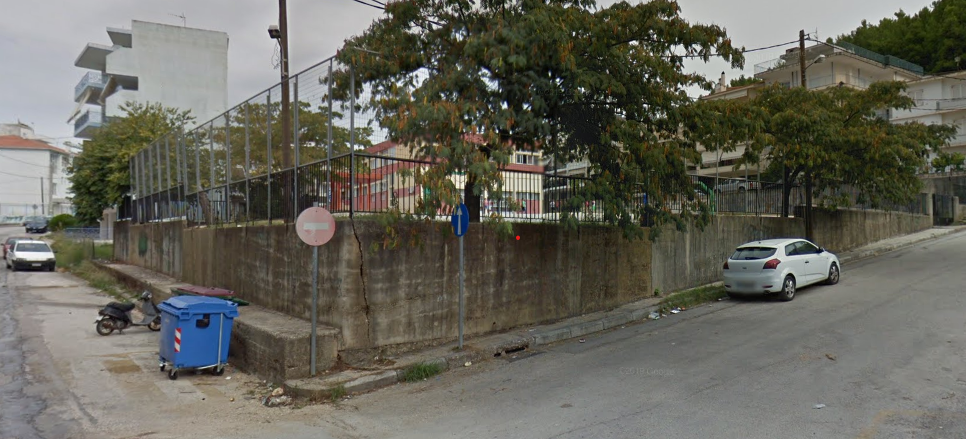Revitalising urban neighbourhoods and bringing life and interest in a neglected area again. The case of Igoumenitsa
Edited on
29 August 2022Although Igoumenitsa is located in a geographically strategic point, it has not been developed yet as a touristic centre or as a "destination" point for visitors. The town lacks appropriate infrastructure that could promote the city as an attraction pole; however, the lack of mobility modes alternative to private car is a main weakness of the city. The main challenge of Igoumenitsa is how to become attractive for tourists, reduce the negative impacts of visitors and provide appealing alternatives to private vehicles mobility.

Igoumenitsa is a small city at the Northwest coast of Greece on the Ionian Sea. With a population of about 12.500 citizens is the capital of the Region of Thesprotia, and a strategic point for tourism and commerce in northern Greece. Having its population increased by 17.4% in the last decade, according to the Hellenic Statistical Authority data, is emerging as the west gate of the country and a center of development with a regional and transnational role and the New Port, which currently is the second largest Greek port in passenger traffic, has brought an end to the isolation of the area. It is the closest gateway to Italy with direct connections to Brindisi, Bari, Ancona and Venice.
"For a long time, the challenge and a strategic goal of the City Administration, was to revive and give new interest to the pilot area, which is located at the west of the city, right at the foot of the hill, and Thriving Streets project came just in time" says Pantelis Karapiperis, the project manager of Igoumenitsa.
The pilot area is composed of both publicly and privately-owned spaces, so that until they are transformed into area with special destinations and permanent activities, Thriving Streets is the perfect opportunity to turn them into temporary spaces, providing a benefit to the local community.

The area is characterized by reduced accessibility due to issues such as:
- Proximity to city center (4km – 7 minutes by car and 30 minutes by walking), and absence of public transit.
- Limited economic opportunities due to lack of investments and development initiatives.
- Vacant and underused outdoor public spaces and abandoned private spaces.
The intervention area could be characterized basically as a residential area where the ground floors of the apartment buildings have shops of local scope that today are basically empty and unused. The area tends to be neglected by people who use the urban space since their movement is limited only to the necessary: to come and leave the place of residence or the place of work - school. There is no interest in staying and engaging with the public space outside the buildings. The use of public transport and the other sustainable forms of movement is non-existing as the use of the private cars has prevailed in all the commuting of a household. This fact, over time, drove the commercial and broader economic activity to the city center and out of town (large department stores) and the neighborhood have been abandoned.
"The challenge and the opportunity of public dialogue and co-decision with a wide network of stakeholders and citizens, has been something that we are very interested in, and we always implement such methodologies when we are given the opportunity..." says Gianna Tzovara and Chrstina Gogolou, members of the Igoumenitsa Project Team.
It is a widely acknowledged fact that offering a new public space or an urban intervention to the citizens, does not automatically mean that people will receive it well and instantly accept and use it. So, you have to engage them in the decision making and by that they will see it as their own.
Unfortunately, for Igoumenitsa, the project did not start as all should have expected, having a long delay on behalf of the State official registration to the public budget affecting the start of the project eligibility. Despite the fact that everything had to be completed in really short time and tight schedule, the project team prepared and delivered a process of co-formulating the Integration Action Plan for the city, on the basis of the URBACT Program methodology, by establishing and activating the Local Support Group (ULG) early on.
In addition to the regular working ULG meetings, the project team visited the pilot area quite often, many times with experts and stakeholders, discussed with local institutions and residents, giving emphasis in the school community of the area.
"I think that if the young people are not activated, if they do not understand that all this is done for their own benefit, whatever intervention is made in the area will not be successful" a teacher from one of the two schools in the area said in one of the meetings. Almost immediately during the same meeting, the first idea for Small Scale Action in the area was a fact. There are some large wall surfaces outside of the school building that are old, gray and without a character.
"It would be a nice activity if the students did large graffiti – mural and give some color and artistic character in the area. This could also be a pole of attraction for residents outside the area, while the interest in visiting the large murals would lead young people to get to know the area and discover the sports facilities and the possibilities for activity in the area."
This is true, of course. Nothing is interesting if it has not been co-designed and jointly implemented with those directly involved and affected. The students, during the art lesson, will decide the topic of the murals, discuss it with their teachers and their parents, and decide exactly the image before the action takes place. A large-scale mural will revive the area and give interest for people to come to the area to see and interact with a 50-60 meters long graffiti.

During the workshops and meetings with the ULG, an important and triggering part was the presentations of good practices, both from the other partner cities of the Thriving Streets network, but also from other cities. According to Homer, the hill next to the pilot area was the cave of Cyclop, the one-eyed giant that tormented Odysseus on his way to Ithaca a little further on south. "We can and should take advantage of the history and the tales of this area, to form a strong image and an iconic Brand about the region," said one of the members of ULG. It is a fact and proven in literature and practice, that most of the time this works as a booster to increase the interest in a neighborhood or area.
A specific and well-organized short walking route, in places in the area that are (or could be) connected to Homer’s Cyclops myth, could be an interest touristic product to promote and to suggest to passing-by tourists visiting the city on their way to-and-from Corfu and Italy. A visit to the neighboring Archaeological Museum could finish this short walk back to Homer’s times in the best way.

The members of ULG have a broad and very diverse composition, including among others sports and cultural associations. The Igoumenitsa Film Club, an active and up-and-coming Organisation of the city, immediately embraced and adopted the idea to organize a pilot evening of Summer open-air cinema in the sports facilities of the pilot area. Facilities that needed renovation but also sought new uses, alternative and innovative. In the forthcoming months, with the assistance and know-how of the Film Club, an Open-Air Cinema will operate in the sports facilities of the area, on a pilot basis for this year and on a permanent basis from the next year onwards, both for the needs of the club and its members, as well as for the residents and visitors of the area. At the same time, the Club, in collaboration with other Cultural Organizations of the area and the city, will elaborate the opportunity, in collaboration with the Cultural Organization of the Municipality, to design cultural events or festivals that will be based in the area, or even to transfer actions and activities from other areas to the neighborhood of interest.
For the Municipality and the Project Team, but also for Thriving Streets, the revitalization of the area is directly linked to sustainable mobility and environmental protection and awareness. Cultural and environmental organisations linked to mobility, sustainable commuting, and well-being (cyclists, cliff-climbers, sports associations etc.) should be involved in the process.
Something that is commonly observed in many areas and cities in Greece is the lack of cooperation between the organizations operating in the areas, and sometime, the complete ignorance of the existence of each other, having as a result the absence of synergies and joint actions. In order to overcome this obstacle, which also characterizes the city of Igoumenitsa, during the ULG meetings, the members developed the idea of organizing a “Mobility NGO Festival” in the pilot area. During the European Mobility Week, in the sports facilities of the area, an exhibition will be organized with exhibit stands and organized activities, involving all the relevant organizations and associations of the area. The activity will be combined with cultural events, possibly with the pilot implementation of the open-air cinema by the Film Club, giving the opportunity to citizens and residents, and to the participating organizations, to get to know each other and design joint actions and initiatives.
The above are some of a number of interesting actions that have emerged from the cooperation of the ULG members with the Project Team. Activities that will mobilise residents and institutions to achieve the goal set for the area of intervention not only during the project implementation but especially after. This is the legacy that we want to leave after the end of Thriving Streets. Legacy and lessons learned to be used as a routine for future cooperation and synergies from the City administration but also from the community itself. The biggest bet and challenge that the Municipality had set from the beginning for the area of intervention, remains to be confirmed.
Authors:
Pantelis Karapiperis, Project Manager
Giannoula Tzovara, Project Team
Christina Gogolou, Project Team
George Sarlis, Local Expert
Submitted by Patrizia Marani on
